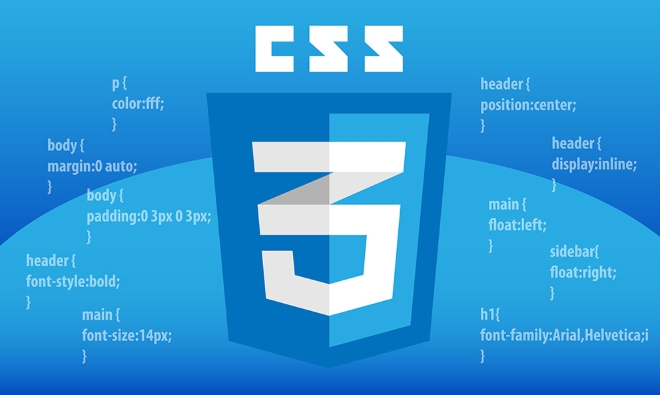Describe the CSS `counter-reset` and `counter-increment` properties
CSS' counter-reset and counter-increment are used to automatically number HTML elements. 1. Use counter-reset to initialize or reset the counter, for example, section { counter-reset: sub-section;} to create a counter named sub-section; 2. Increment the counter through counter-increment, such as h3 { counter-increment: sub-section;} to increment each h3 title number; 3. Use the content attribute to display the counter in combination with pseudo-elements, such as h3::before { content: counter(section) "." counter(sub-section);} to implement nested numbers. These functions are suitable for scenarios such as automatic generation of title numbers, custom list styles, multi-level numbers and UI progress indicators, and complex layout logic can be completed without JavaScript.

If you've ever wanted to automatically number headings, list items, or sections in your HTML using just CSS, counter-reset and counter-increment are the tools you need. These properties let you create and manipulate counters directly in your stylesheets — no JavaScript required.

What Are Counters in CSS?
At their core, CSS counters are variables maintained by the browser that can be incremented and displayed. They're especially useful for things like numbered headings, ordered lists, or multi-level numbering (like 1.1, 1.2, 2.1, etc.).
You don't declare them like variables in JavaScript. Instead, you "initialize" them with counter-reset and "update" them with counter-increment .

How to Use counter-reset
The counter-reset property is used to create a new counter or reset an existing one to a specific value (default is 0).
For example:

section {
counter-reset: sub-section;
} This creates a counter called sub-section and resets it every time a new section starts — which is perfect for nested numbering.
You can also set it to start at a different number:
section {
counter-reset: sub-section 5;
} Now, the first sub-section inside this section will start at 6 (because counter-increment typically adds 1 by default).
A few things to keep in mind:
- Counters are scoped to the element they're defined on and its children.
- You can define multiple counters in one declaration:
counter-reset: section 0 sub-section 0;
How to Use counter-increment
Once a counter exists, you use counter-increment to increase its value . This is usually applied to elements that should trigger a number change — like subscriptions or list items.
Example:
h3 {
counter-increment: sub-section;
} Each time an h3 appears inside a parent that has a sub-section counter, it increases that counter by 1.
Like counter-reset , you can increment multiple counters at once:
h2 {
counter-increment: section sub-section 2;
} Here, section increases by 1, and sub-section jumps up by 2.
Important note: By default, counter-increment increases by 1 unless specified otherwise.
Displaying Counters with content
Creating and updating counters isn't enough — you also need to show them. That's where the content property comes in, often used with ::before or ::after pseudo-elements.
Example:
h3::before {
content: "Section " counter(sub-section) ": ";
} This would display something like “Section 2:” before each h3 .
For nested counters (like chapter and subscription), you can do:
h3::before {
content: counter(section) "." counter(sub-section) " ";
}That gives you output like “2.1”, “2.2”, etc., depending on how many times each counter was reset and incremented.
Common Use Cases
Here are some practical scenarios where these properties shine:
- Auto-numbered headings : Perfect for documentation sites or long-form content.
- Custom list styling : You can build your own ordered lists without relying on
<ol></ol>. - Multi-level counters : Like 1.1, 1.2, 2.1, etc., great for technical specs or legal documents.
- Visual indicators : Counters can help track progress visually in UI components.
Just remember:
- Always reset a counter before using it.
- Increment only when needed.
- Don't forget to display it with
content.
That's basically how counter-reset and counter-increment work. It might seem a bit abstract at first, but once you get the hang of scoping and nesting, they become powerful tools for layout logic.
The above is the detailed content of Describe the CSS `counter-reset` and `counter-increment` properties. For more information, please follow other related articles on the PHP Chinese website!

Hot AI Tools

Undress AI Tool
Undress images for free

Undresser.AI Undress
AI-powered app for creating realistic nude photos

AI Clothes Remover
Online AI tool for removing clothes from photos.

Clothoff.io
AI clothes remover

Video Face Swap
Swap faces in any video effortlessly with our completely free AI face swap tool!

Hot Article

Hot Tools

Notepad++7.3.1
Easy-to-use and free code editor

SublimeText3 Chinese version
Chinese version, very easy to use

Zend Studio 13.0.1
Powerful PHP integrated development environment

Dreamweaver CS6
Visual web development tools

SublimeText3 Mac version
God-level code editing software (SublimeText3)

Hot Topics
 What is Autoprefixer and how does it work?
Jul 02, 2025 am 01:15 AM
What is Autoprefixer and how does it work?
Jul 02, 2025 am 01:15 AM
Autoprefixer is a tool that automatically adds vendor prefixes to CSS attributes based on the target browser scope. 1. It solves the problem of manually maintaining prefixes with errors; 2. Work through the PostCSS plug-in form, parse CSS, analyze attributes that need to be prefixed, and generate code according to configuration; 3. The usage steps include installing plug-ins, setting browserslist, and enabling them in the build process; 4. Notes include not manually adding prefixes, keeping configuration updates, prefixes not all attributes, and it is recommended to use them with the preprocessor.
 How can you animate an SVG with CSS?
Jun 30, 2025 am 02:06 AM
How can you animate an SVG with CSS?
Jun 30, 2025 am 02:06 AM
AnimatingSVGwithCSSispossibleusingkeyframesforbasicanimationsandtransitionsforinteractiveeffects.1.Use@keyframestodefineanimationstagesforpropertieslikescale,opacity,andcolor.2.ApplytheanimationtoSVGelementssuchas,,orviaCSSclasses.3.Forhoverorstate-b
 What is the conic-gradient() function?
Jul 01, 2025 am 01:16 AM
What is the conic-gradient() function?
Jul 01, 2025 am 01:16 AM
Theconic-gradient()functioninCSScreatescirculargradientsthatrotatecolorstopsaroundacentralpoint.1.Itisidealforpiecharts,progressindicators,colorwheels,anddecorativebackgrounds.2.Itworksbydefiningcolorstopsatspecificangles,optionallystartingfromadefin
 CSS tutorial focusing on mobile-first design
Jul 02, 2025 am 12:52 AM
CSS tutorial focusing on mobile-first design
Jul 02, 2025 am 12:52 AM
Mobile-firstCSSdesignrequiressettingtheviewportmetatag,usingrelativeunits,stylingfromsmallscreensup,optimizingtypographyandtouchtargets.First,addtocontrolscaling.Second,use%,em,orreminsteadofpixelsforflexiblelayouts.Third,writebasestylesformobile,the
 CSS tutorial for creating loading spinners and animations
Jul 07, 2025 am 12:07 AM
CSS tutorial for creating loading spinners and animations
Jul 07, 2025 am 12:07 AM
There are three ways to create a CSS loading rotator: 1. Use the basic rotator of borders to achieve simple animation through HTML and CSS; 2. Use a custom rotator of multiple points to achieve the jump effect through different delay times; 3. Add a rotator in the button and switch classes through JavaScript to display the loading status. Each approach emphasizes the importance of design details such as color, size, accessibility and performance optimization to enhance the user experience.
 What is feature detection in CSS using @supports?
Jul 02, 2025 am 01:14 AM
What is feature detection in CSS using @supports?
Jul 02, 2025 am 01:14 AM
FeaturedetectioninCSSusing@supportschecksifabrowsersupportsaspecificfeaturebeforeapplyingrelatedstyles.1.ItusesconditionalCSSblocksbasedonproperty-valuepairs,suchas@supports(display:grid).2.Thismethodensuresfuturecompatibilityandavoidsrelianceonunrel
 European virtual currency trading platform ranking list 2025 latest list TOP10 inventory (recently updated)
Jul 11, 2025 pm 08:57 PM
European virtual currency trading platform ranking list 2025 latest list TOP10 inventory (recently updated)
Jul 11, 2025 pm 08:57 PM
The top ten virtual currency trading platforms in Europe in 2025 include Binance, OKX, Coinbase, etc., and are selected based on compliance, security, expenses, asset types and user experience. 1. Binance: The world has the largest transaction volume, low fees, and has obtained a license in multiple countries; 2. OKX: Comprehensive products, strong technology, registered in France; 3. Coinbase: Compliance and safety, suitable for beginners, licensed in many countries; 4. Gate.io: Has a long history, high security, registered in many European countries; 5. Bitstamp: Founded early, has strong compliance, regulated by Luxembourg; 6. eToro: Supports social transactions, diversified investment, regulated by CySEC; 7. Bitpanda: World
 Integrating CSS and JavaScript effectively with HTML5 structure.
Jul 12, 2025 am 03:01 AM
Integrating CSS and JavaScript effectively with HTML5 structure.
Jul 12, 2025 am 03:01 AM
HTML5, CSS and JavaScript should be efficiently combined with semantic tags, reasonable loading order and decoupling design. 1. Use HTML5 semantic tags, such as improving structural clarity and maintainability, which is conducive to SEO and barrier-free access; 2. CSS should be placed in, use external files and split by module to avoid inline styles and delayed loading problems; 3. JavaScript is recommended to be introduced in front, and use defer or async to load asynchronously to avoid blocking rendering; 4. Reduce strong dependence between the three, drive behavior through data-* attributes and class name control status, and improve collaboration efficiency through unified naming specifications. These methods can effectively optimize page performance and collaborate with teams.







